Hundreds of survivors, the families of victims, volunteers and members of international forensic identification teams are deciding whether to come back to Thailand to note December 26, 2004, but so far no information has been forthcoming from national officials or locally in Phuket, Phang Nga and Krabi.
No event has driven awareness of Phuket and the Andaman region more than the big wave that killed about 5400 people along Thailand's west coast in the country's worst natural disaster.
What happened around Phuket, where people from more than 40 countries perished, triggered sympathy for other countries around the region where a total of more than 220,000 were killed.
Many officials on Phuket share the attitude of most resort managers and people in the tourist industry: they have no wish to be reminded of the tragic event, nor do they wish to remind tourists that Phuket always will remain in a tsunami hazard zone.
People in and around Khao Lak in the province of Phang Nga, north of Phuket, have retained the wave in their hearts and minds because that's where the greatest number of victims were found.
While detailed planning and advanced publicity now surrounds the Asian Beach Games to be held on Phuket over 10 days in late November, no planning seems to have gone into events to mark the 10th anniversary of the tsunami.
Phuket appears to be hoping the Asian Beach Games will increase tourism revenue yet the 10th anniversary of the tsunami has far greater global appeal and is likely to draw thousands of visitors without the high cost outlay of the beach games.
The survivors, the families of the victims, the volunteers and the members of body identification units are likely to come anyway, regardless of whether Thailand has a plan to mourn its citizens and the citizens of so many other countries.
As proven by Phuket's twin tsunami and earthquake alerts in April, 2012, the chance of another cataclysmic event cannot be overlooked. Yet on Phuket, most of the tsunami evacuation and warning signs erected in 2005 are now faded beyond usefulness.
''The island has no collective memory,'' one envoy, who wishes to remain anonymous, told Phuketwan. ''As soon as an event passes, its significance is forgotten.''
Recovery from the tsunami was completed in record time, with some battered resorts choosing to rebuild and reopen as fast as possible while others waited for signs that tourists were definitely returning. They did not have to wait long.
There is no doubt that the tsunami put Phuket on the world map and generated an outpouring of global sympathy and generosity unmatched since. Yet people along the Andaman coast still fall into two clear categories: the deniers and the realists.
Memories of December 26, 2004 linger most strongly in the Khao Lak region, where the patrol boat that washed inland and Nam Khem village memorials mark the Andaman's most significant historical event.
What most people don't realise is that while the big wave made Phuket an international holiday ''brand,'' the island, with ten times the population of the Khao Lak region, suffered just one tenth of the deaths and destruction.
As well as the remarkable global outpouring of generosity, the tsunami generated one of the most remarkable success stories of forensic science that the world has seen.
More than 3000 bodies of victims were unidentified after the big wave swept rich tourists into workers' shanties and impoverished Burmese into the remains of ritzy resorts.
The process of restoring names to most of those victims deserves to be celebrated, along with the commemoration of the victims' deaths.
Perhaps the most significant memorial to the event remains the cemetery north of Phuket where 388 victims still await identification.
Phuket and the Andaman coast is virtually unrecognisable from the Phuket and Andaman coast of December 27, 2004.
The most positive of people noted that the beaches had been swept cleaner than they had been for a decade and hoped the tsunami would mark a fresh start.
The big wave did prove to be a fresh start - for construction and for opportunism on a scale never previously seen.
For all kinds of reasons, the tsunami of December 26, 2004, remains a hugely significant event for Thailand and the countries of the region.
One day soon, the survivors, the families and the forensic teams will hopefully learn how Thailand plans to mark the 10th anniversary.
About 1070 Swedes and Germans died in the tsunami, along with about 185 Fins, 155 Britons, 115 Swiss, 95 French, 88 Austrians, a similar number of Norwegians, 78 Koreans, 40 people from Hong Kong, (which is on the tsunami memorial wall as China) 36 Dutch, 28 Japanese, 24 Americans and 23 Australians.
About 2700 Thais died, along with a number of Burmese laborers.








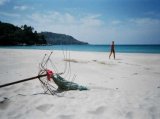
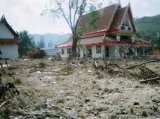
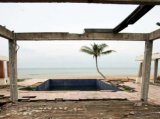

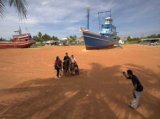


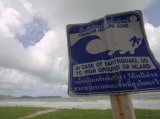
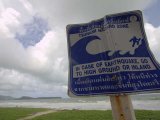





what ever happened to the missing money from the relief fund ? that was never answered
Posted by Michael on April 29, 2014 12:12
Editor Comment:
What missing money from what relief fund?